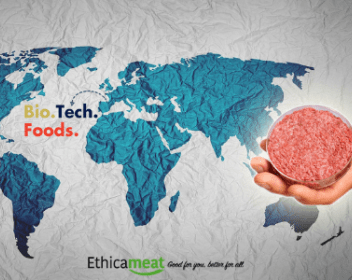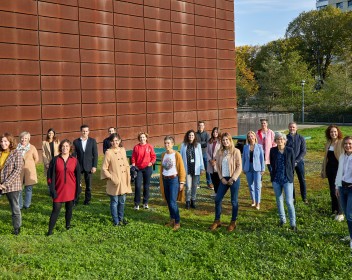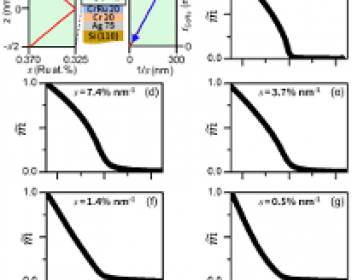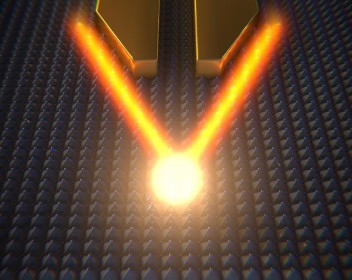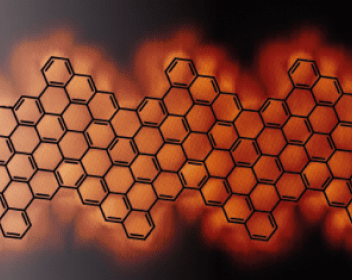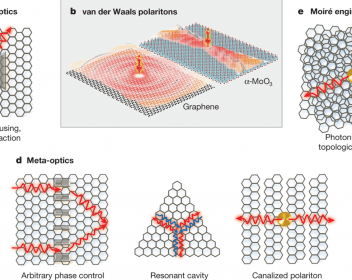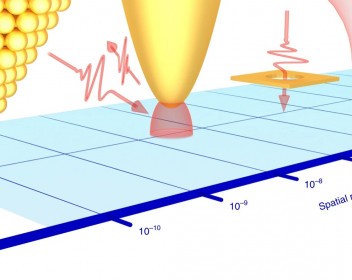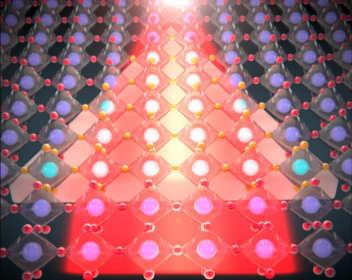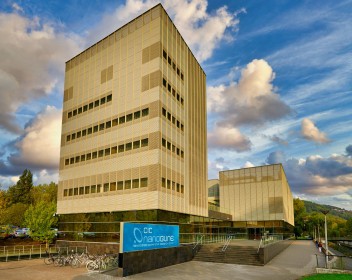Albisteak
Brasilgo JBS erraldoiak 36 milioi inbertitu ditu Biotech Foods haragi kultibatua ekoizten duen euskal enpresan
Emilio Artacho APS Fellowship in 2021
Emakumeak Zientzian hazten ari da
Hamazazpi euskal erakundek bat egin dute Emakumeak Zientzian proiektuarekin, lankidetza-hitzarmen berri bat sinatuz, eta, hala, ekimenaren helburuekiko konpromisoa berretsiko dute: zientzian diharduten emakumeen lana ikusaraztea, jarduera zientifiko-teknikoak gizonezkoen kontua direlako ustea apurtzea eta neskek eta nerabeek zientziako ikasketak hauta ditzaten sustatzea. Helburu horiek kontuan hartuta, erakundeek indarrak batu dituzte Emakume eta Neska Zientzialarien Nazioarteko Eguna dela eta (otsailaren 11n ospatzen da urtero) elkarrekin egingo diren jardueren programa antolatzeko.
Overriding Universality via nano-scale Materials Design
In a recent article published in Physical Review Letters (Phys. Rev. Lett. 127, 147201 (2021)), researchers from the Nanomagnetism group at nanoGUNE in collaboration with scientists from the US and Colombia have demonstrated that it is possible to design thermodynamic critical exponents a la carte and override the universality of phase transition behavior, which was previously understood to be only dependent on the dimensionality of sample and order parameter.
Researchers develop an innovative strategy to focus infrared light into the nanoscale
An international team of researchers, including members of nanoGUNE's Nanooptics group, publish in “Science Advances” the grounds for the realization of nanodevices that, based on the manipulation of light at the nanoscale, promise the development of extraordinarily sensitive biosensors. The researchers also designed gold nanoantennas that allow obtaining extremely small (600.000 times smaller than the size of a grain of sugar) and bright focal spots. This achievement opens new avenues for the detection and control of single molecules, such as glucose, and atmospheric contaminants.
Graphene nanoribbons for emerging quantum technologies
A multidisciplinary group of research teams, working in the framework of FET OPEN Project SPRING (www.springfetopen.eu), report that certain stripes of graphene called graphene nanoribbons (GNRs) acquire the anomalous topological state of matter when narrowed down to just a few nanometers in width. The research has been recently published in Nature Communications.
Review: Interface nano-optics with van der Waals polaritons
An international team, including the leader of the Nanooptics group at nanoGUNE, Rainer Hillenbrand, discusses in ‘Nature’ the state-of-the-art and opportunities for controlling the propagation of nanolight (in form of polaritons) in van der Waals materials with the help of classical refractive optics concepts, meta-optics and moire engineering.
Review: Nanoscale terahertz scanning probe microscopy
Four international experts, including the leader of the Nanooptics group at nanoGUNE Rainer Hillenbrand, analyze in ‘Nature Photonics’ the terahertz scanning probe microscopy techniques that achieve spatial resolution on the scale of micrometres to ångströms, with particular emphasis on their overarching approaches and underlying probing mechanisms, and they forecast the next steps in the field.
Understanding nanolight refraction on highly anisotropic materials
An international team of researchers, including members of nanoGUNE's Nanooptics group, unveils in ‘Nature Communications’ fundamental aspects of nanolight refraction in highly anisotropic media. The researchers also report the design of a new planar nanolens 1000 times smaller than the thickness of a human hair, which enables control of nanolight propagation, laying the groundwork for the development of photonic nanotechnologies with exciting possibilities.
Bikaintasun zientifikoaren Maria de Maeztu saria berritu du CIC nanoGUNEk
Estatuko Ikerketa Agentziak zazpi zentrori eta sei ikerketa-unitateri eman dizkie “Severo Ochoa” eta “Maria de Maeztu” bikaintasun-sariak, nazioartean eragina eta garrantzia duten emaitzengatik nabarmendu direlako. CIC nanoGUNEk “Maria de Maeztu” saria berritu du eta 500.000 euroko finantziazioa izango du datozen lau urteetan.
Agenda
| Al | As | Az | Og | Or | Lr | Ig |
|---|---|---|---|---|---|---|
|
1
|
2
|
3
|
4
|
5
|
6
|
7
|
|
|
|
|
|
|
|
|
|
9
|
10
|
11
|
12
|
13
|
14
|
|
|
|
|
|
|
|
|
|
|
15
|
16
|
19
|
20
|
21
|
||
|
|
|
|
|
|
||
|
23
|
24
|
26
|
27
|
28
|
||
|
|
|
|
|
|
||
|
29
|
1
|
2
|
3
|
4
|
5
|
|
|
|
|
|
|
|
|
Ekitaldiak
- 28/07/2024 - 01/08/2024
International Conference on Optical MEMS and Nanophotonics - OMN 2024
nanoTEKA
Aurkitu argazkiak, irudi esperimentalak, bideoak, audioak eta nanoGUNErenirudi korporatiboa.

